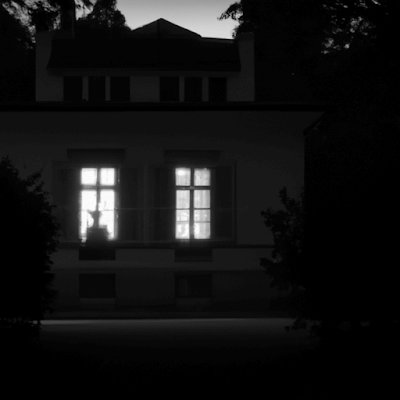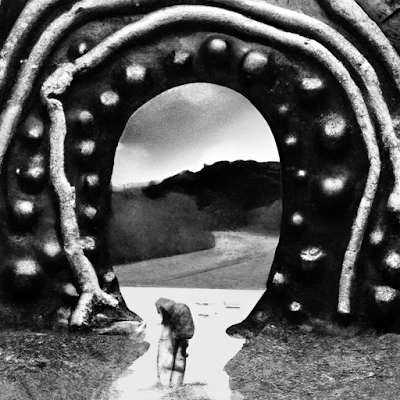My pet peeve:
I can't make heads or tails of Deleuze-Guattari. But I also see that they're popular and influential. So I opened a request on Manifold Markets:
But as yet I've not had very useful suggestions. So I asked ChatGPT / Universal Primer, and this looked more clear.
But my pet peeve stays up: Are their ideas any better than the more concrete ideas like complexity theory, and network theory? These look more useful. Aren't their ideas just cool metaphors, that sound good, but don't lead to better understanding?
Technical Breakdown:
Desiring-Machines: The most crucial aspect of their concept revolves around "desiring-machines." This notion is meant to challenge the psychoanalytic views of desire as a lack or deficiency. Instead, Deleuze and Guattari see desire as a productive force, an endless process of connecting, breaking, and reconnecting between entities. In this sense, everything can be considered a machine insofar as it is involved in these processes of production and exchange.
Assemblages: Machines are components of larger entities that Deleuze and Guattari call "assemblages" or "arrangements." These assemblages are networks or conglomerates of interconnected machines that work together to produce something, be it tangible or intangible (like social systems, ecosystems, or even ideas).
Anti-Hierarchical: Their concept also carries a fundamentally anti-hierarchical stance. Unlike traditional views that prioritize certain elements (e.g., the mind over the body, the individual over the environment), Deleuze and Guattari’s machines operate on a flat plane of consistency where everything is interconnected and of equal importance in the production of reality.
Socio-Political Critique: They use this framework to critique capitalist societies, arguing that capitalism is a highly efficient "socius" that captures desires and channels them into its own reproductive machinery, turning social and individual desires into commodities.
Analogies for Understanding:
Network of Cities: Imagine each city as a machine. Cities have inputs (resources, people, information) and outputs (products, waste, culture). They are interconnected through various means (roads, the internet, trade routes) forming a larger assemblage: the country or the global economy.
The Human Body: Consider the human body as a complex of machines. Each organ (heart, lungs, stomach) is a machine with specific functions, inputs (oxygen, food), and outputs (carbon dioxide, energy). Together, they form an assemblage that is the individual, which, in turn, interacts with other "machines" (other people, society, the environment).
Key Areas of Application:
Political Economy: Scholars in political economy have used Deleuze and Guattari's ideas to analyze the nature of capitalism and neoliberalism. They focus on concepts like deterritorialization and reterritorialization to understand global financial flows, market dynamics, and the socio-political implications of economic policies.
Organizational Theory: In the field of organizational theory, researchers apply their concepts to understand the dynamics within organizations and the broader market. The idea of assemblages is particularly useful for analyzing how organizations adapt, evolve, and interact within complex economic ecosystems.
Marketing and Consumer Research: Their concepts have also been applied to marketing and consumer research, offering a fresh perspective on consumer desires, brand communities, and the production of consumer culture. This approach views markets as assemblages of desires, goods, consumers, and cultural meanings.
Innovation and Technology Studies: Deleuze and Guattari's work on machines and assemblages has been influential in studies of technology and innovation, particularly in understanding how technological advancements and information flows reshape economic and social landscapes.
Notable Economists and Scholars:
While specific economists who directly apply Deleuze and Guattari's theories might not be widely known in mainstream economic circles, interdisciplinary scholars like Brian Massumi, Manuel DeLanda, and others have extensively engaged with their ideas in ways that intersect with economic thought. Manuel DeLanda, for example, has applied Deleuzian theory to social complexity and materialist philosophy, offering insights that are valuable to economic analysis.
Challenges and Considerations:
Interdisciplinarity: The application of Deleuze and Guattari's ideas in economics often requires an interdisciplinary approach, blending insights from philosophy, sociology, anthropology, and cultural studies.
Critique of Mainstream Economics: Utilizing their concepts in economic research often entails a critique of the reductionist, equilibrium-focused models of mainstream economics, advocating instead for a more dynamic, non-linear understanding of economic phenomena.
Analogies for Understanding:
Imagine the global economy as a vast, interwoven tapestry, where each thread represents different elements (businesses, consumers, policies, technologies). Deleuze and Guattari's concepts help us see not just the patterns on the surface but how each thread is connected, how they influence the shape and texture of the tapestry, and how changing one thread can alter the entire design.
Application in Organizational Theory:
Application: In organizational theory, Deleuze and Guattari's idea of assemblages can be applied to understand how organizations are complex systems composed of various interconnected elements (people, processes, technologies).
This application reflects their theory of assemblages as heterogeneous networks where different components interact. It emphasizes the non-linear, dynamic relationships within organizations, challenging hierarchical, top-down management structures.
Analogy: Consider an ecosystem in a forest. Just as plants, animals, insects, and the environment interact in complex, unpredictable ways, organizational elements interact within the assemblage. Changes in one part of the ecosystem can have ripple effects, similar to changes within an organization.
Application in Political Economy:
Application: Their concepts of deterritorialization and reterritorialization are used to analyze global financial flows and the impact of neoliberal policies.
These processes describe how capital, labor, and commodities move beyond traditional boundaries (deterritorialization) and then re-establish themselves within new contexts or systems (reterritorialization), reflecting Deleuze and Guattari's interest in the fluid, ever-changing nature of social and economic landscapes.
Analogy: Imagine water flowing through various landscapes, constantly moving, shaping, and being shaped by the terrain (deterritorialization). It eventually settles in new areas, forming lakes or rivers (reterritorialization), analogous to the movement and reconfiguration of economic elements in new contexts.
Application in Marketing and Consumer Research:
Application: The concept of desiring-machines is applied to understand consumer behavior, focusing on how desires are not just individual psychological phenomena but are shaped by and embedded within social and economic networks.
This reflects Deleuze and Guattari's broader theory that desires are productive forces within assemblages, challenging traditional views that see desire as lack or deficiency. It underscores the idea that consumer behavior is deeply intertwined with the social and material assemblages in which individuals are embedded.
Analogy: Think of a shopping mall as an assemblage where consumers, products, advertisements, and social interactions create a dynamic environment. Each element influences and is influenced by the others, much like desiring-machines in Deleuze and Guattari's theory, producing desires and actions in a complex web of relations.
Reflections:
By examining these applications, we see a common theme: Deleuze and Guattari's work focuses on the dynamic, interconnected nature of systems, whether they are social, economic, or psychological. Their theories challenge us to think beyond traditional categories and hierarchies, emphasizing fluidity, networks, and the production of reality through desire and interaction.







































